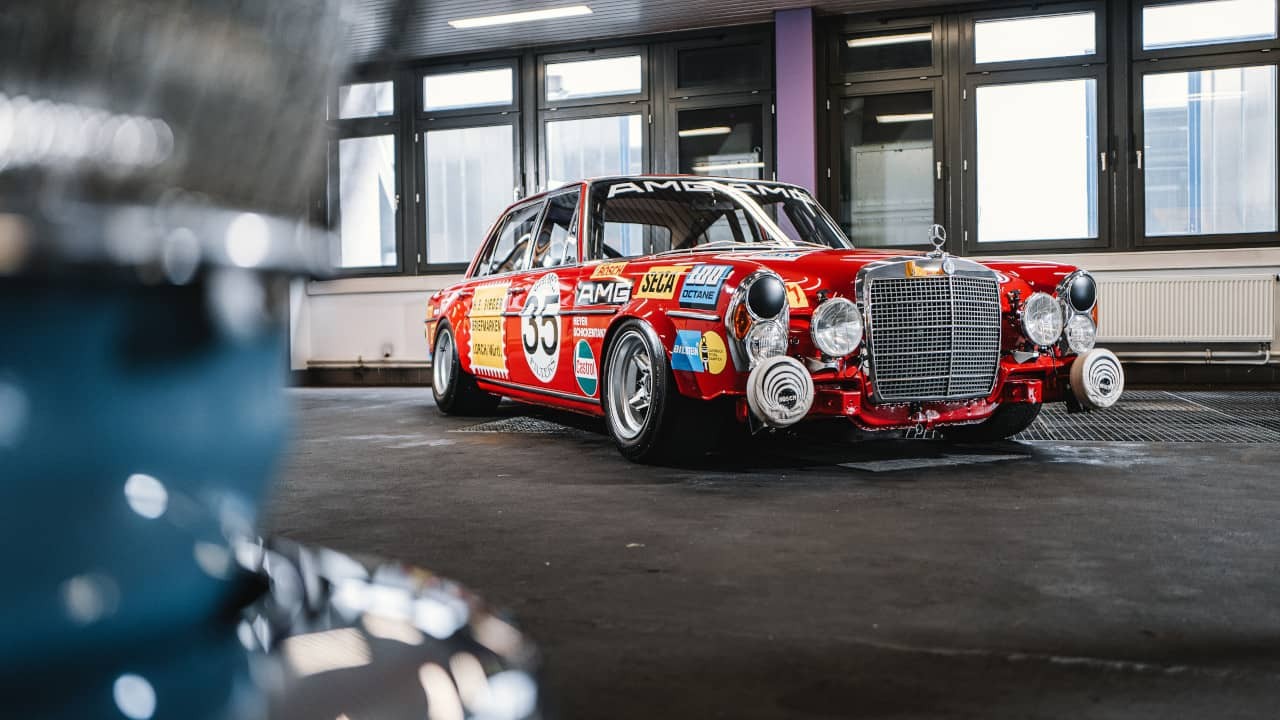Mercedes-AMG is synonymous with high-performance vehicles, but what does AMG actually stand for? For those passionate about automotive excellence, the three letters ‘AMG’ on a Mercedes-Benz signify a leap into a realm of enhanced power, dynamic handling, and exclusive design. AMG, officially Mercedes-AMG GmbH, is the performance division of the renowned German automaker Mercedes-Benz. The name itself is an acronym derived from the surnames and the birthplace of the company’s founders: Aufrecht, Melcher, and Großaspach.
The Genesis of AMG: From Garage to Global Icon
The story of AMG begins with two Daimler-Benz engineers, Hans Werner Aufrecht and Erhard Melcher. Their shared passion for motorsport and a desire to push the boundaries of automotive performance led them to embark on a journey that would redefine Mercedes-Benz vehicles. In 1967, in Großaspach, Germany, they established “Aufrecht Melcher Großaspach, Ingenieurbüro für Konstruktion und Versuch, Entwicklung von Rennmotoren” – which translates to Aufrecht Melcher Großaspach, Engineering office for construction and testing, development of racing engines. This marked the birth of AMG.
Initially, AMG operated as an independent tuning company, specializing in modifying Mercedes-Benz cars for racing. Even after Daimler-Benz withdrew from motorsports, Aufrecht and Melcher continued to refine the 300 SE racing engine in their free time. Their dedication paid off handsomely when, in 1965, an engine they developed powered a car to an impressive ten victories in the German Touring Car Championship. This early success laid a solid foundation for the AMG brand’s reputation for performance and engineering prowess. Aufrecht’s vision extended beyond the racetrack; he aimed to bring motorsport-inspired performance to everyday road cars, initiating the modification of Mercedes-Benz vehicles to embody the AMG ethos.
Throughout the 1970s and 80s, AMG built a name for itself by creating incredibly potent and luxurious versions of Mercedes-Benz models. Their expertise in engine building and vehicle dynamics led to a growing collaboration with Daimler-Benz. This partnership became formalized in the late 1980s when AMG and Daimler-Benz began working together in official motorsports ventures. By 1990, the relationship deepened further with a formal cooperation contract, paving the way for AMG to become an integral part of Mercedes-Benz. Since then, Mercedes-AMG has been at the forefront of producing some of the most sought-after high-performance vehicles globally.
Decoding the Meaning: What Does an AMG Mercedes Represent?
When you see the AMG badge on a Mercedes-Benz, it signifies more than just a trim level; it represents a commitment to exhilarating performance. Mercedes-AMG vehicles are engineered for driving enthusiasts who crave heightened power, responsive handling, and a more engaging driving experience. Typically, AMG models boast more powerful engines compared to their standard Mercedes-Benz counterparts, often featuring larger displacements and advanced technologies to extract maximum performance. This translates to quicker acceleration, higher top speeds, and an overall more dynamic driving character.
However, the AMG treatment extends beyond just engine upgrades. Mercedes-AMG engineers meticulously refine various aspects of the vehicle, including the chassis, suspension, braking system, and aerodynamics. These enhancements work in harmony to deliver superior handling precision, improved cornering capabilities, and enhanced stopping power, ensuring that AMG vehicles are not just fast in a straight line but also incredibly capable in all driving scenarios.
To broaden the appeal and accessibility of the AMG brand, Mercedes-Benz introduced AMG Line and AMG Sport trims. These options offer a taste of the AMG experience by incorporating AMG-inspired styling cues, sporty interior elements, and sometimes mild performance enhancements. While AMG Line and AMG Sport models do not possess the full-fledged power of ‘pure’ AMG cars, they provide an entry point into the AMG aesthetic and driving feel, allowing a wider range of customers to experience the allure of AMG.
In conclusion, “Amg Mercedes Meaning” is rooted in the names of its founders and evolved into a symbol of premier automotive performance within the Mercedes-Benz family. It represents a legacy of motorsport success, engineering innovation, and a dedication to delivering driving experiences that are both thrilling and luxurious. When you encounter an AMG badge, you know you are in the presence of a vehicle crafted with a passion for performance at its heart.
